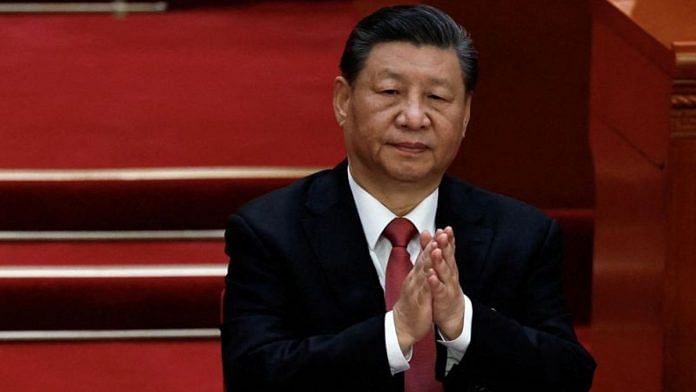The Chinese internet is buzzing with discussions on Foreign Direct Investment in the country. The catalyst? A front-page article in the People’s Daily titled Has there been a large-scale withdrawal of foreign capital from China? The debate revolves around a striking contradiction: while actual foreign capital inflows dropped by 27.1 per cent in 2024, the number of newly established foreign-funded enterprises rose by 9.9 per cent.
This discrepancy has fuelled competing narratives. Many in China view this as a shift in investment patterns rather than a mass exodus. And the prevailing discourse is framing the decline as part of the economy’s evolution rather than outright capital flight.
Transformation, not withdrawal
Battles are now won by shaping narratives, and that is precisely what is unfolding on the Chinese internet. The country’s official response reframes concerns over capital flight, calling it a sign of ‘economic upgrading’. The People’s Daily argues that foreign capital is not vanishing but shifting—moving away from traditional sectors toward high-tech and service industries.
The article draws a parallel with Walmart’s strategy in China. While its hypermarkets have scaled back operations in the country, Sam’s Club—Walmart’s premium, membership-based retail arm—has expanded, opening its 52nd store in Zhejiang in December 2024.
Moreover, Walmart’s overall sales in China grew 17 per cent year-on-year in the third quarter, reinforcing the claim that companies are adapting rather than exiting.
The People’s Daily strikes an optimistic tone: “To walk with China is to walk with opportunities, and to invest in China is to invest in the future.” This narrative aligns with broader government messaging: China remains an attractive investment destination, but its priorities are evolving. State media frames the FDI decline as a natural progression in a maturing economy—less an exodus, more a realignment. While many firms may be retreating, high-tech and service-driven businesses continue to invest, prioritising quality over quantity.
Jiang Xiaojuan, a professor at the University of Chinese Academy of Social Sciences, reinforces this perspective. She argues that, as China’s industrial competitiveness strengthens, some foreign firms struggle to keep pace while others recalibrate their presence. With expanded market access, policy incentives, and a resilient supply chain, China continues to attract capital in high-tech sectors. Rather than closing itself off, she contends, China is leveraging openness to sharpen its economic edge.
Also read:
Competing narratives
The broader question remains: Does China’s FDI shift signal economic resilience or underlying vulnerabilities? Over the past months, discussions on Chinese social media have highlighted how major international financial institutions have ramped up their holdings of Chinese assets, fuelling what some describe as a “China fever” in the Chinese capital market. Investment giants such as JP Morgan, BlackRock, and Morgan Stanley have doubled down on Chinese assets, citing economic recovery, policy support, and attractive valuations.
According to the Shanghai Observer, financial institutions such as BlackRock, HSBC, and Citi have upgraded their outlook on Chinese equities, attributing it to shifting global capital flows. While some interpret this as a vote of confidence, others caution that increased foreign participation could heighten market volatility.
The People’s Daily article quickly became one of Weibo’s most trending topics, amassing over six million views. A widely shared comment read: “China remains a crucial destination for global capital.”
A Chinese commentator writing under a pseudonym, dismisses claims of an FDI exodus, arguing that capital is staying—and even re-entering—China. While some firms have explored India, the commentator contends that structural challenges limit its appeal. Instead, investment is shifting toward China’s central and western regions, high-tech manufacturing, semiconductors, 6G, and biomedicine, reinforcing the country’s position as a global industrial hub. Seemingly, some Chinese commentators, clinging to outdated narratives about India and unnecessarily dragging it into the discussion, argue that its manufacturing sector is stuck in a “dead cycle” where a stagnant labour force stifles growth and deters foreign investment.
Also read:
External pressures, future of FDI
Meanwhile, the China Economic Weekly acknowledges external pressures, noting that geopolitical tensions and sluggish global investment trends pose challenges. However, it aligns with much of the official, scholarly, and grassroots discourse in China, emphasising that these hurdles should be addressed through higher-quality development and a more open economic environment.
Broadly speaking, Chinese discourse on FDI trends falls into three categories.
The first group dismisses claims of a major withdrawal, pointing to the rise in newly registered foreign businesses as evidence of continued confidence in China’s market.
The second acknowledges the decline but views it as part of an economic shift toward higher-value industries. And the third attributes the downturn to external pressures, particularly from Western governments and media narratives, arguing that competition in China’s high-tech sector is pushing weaker foreign firms out while domestic companies thrive.
In the middle of these discussions, the rise of DeepSeek has renewed confidence in young scientists, entrepreneurs, and, to some extent, the leadership. This suggests that while external capital flows may be shifting, domestic innovation continues to drive economic sentiments within China.
Whether this shift signals resilience or economic fragility ultimately depends on one’s perspective. While China frames these challenges as ‘transformation’, how foreign capital views them—whether as opportunities or as risks—will play a crucial role in shaping the next phase of Beijing’s economic trajectory.
Sana Hashmi is a fellow at the Taiwan-Asia Exchange Foundation. She tweets @sanahashmi1. Views are personal.
(Edited by Zoya Bhatti)






